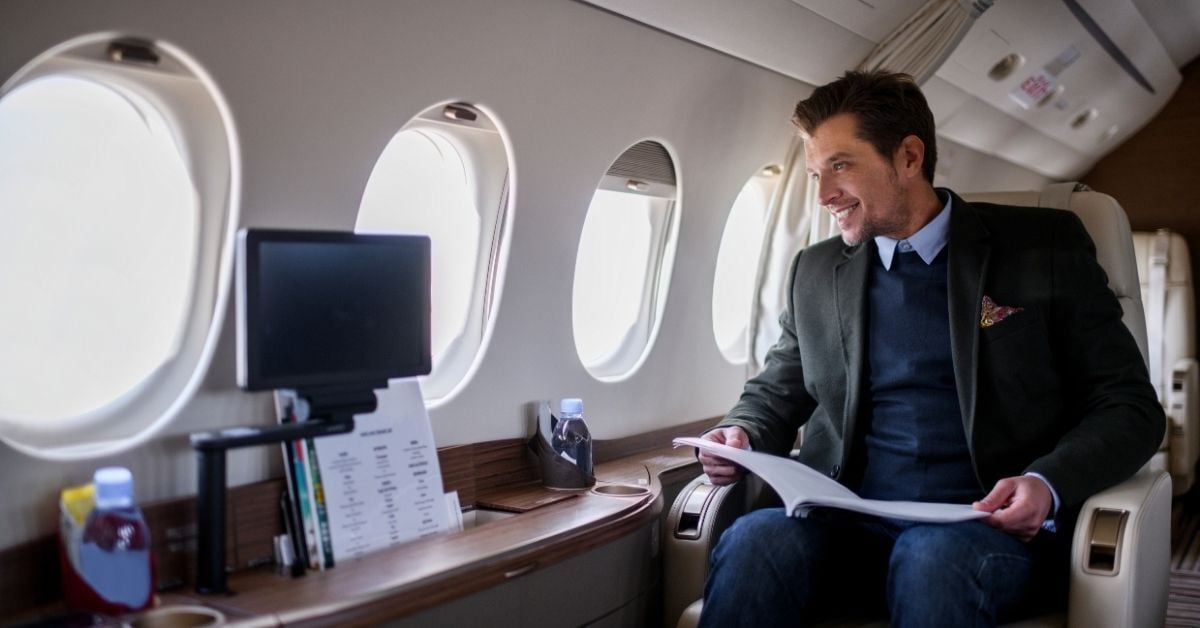In the world of private aviation, ownership represents more than freedom, it’s a statement of precision, timing, and strategy. The path to buying or financing a jet is filled with opportunities, but also with pitfalls that can cost millions if handled carelessly. The difference between a smooth transaction and a costly mistake often comes down to one thing: having the right team and the right financial strategy from day one.
In Own The Jet, Aspen Aero Group explores the decisions that shape smart ownership. This episode focuses on what it truly takes to purchase an aircraft confidently. From assembling the right transaction team to understanding how lenders view your liquidity, financial stability, and long-term aviation goals.
The Foundation of a Successful Purchase: Building the Right Transaction Team
One of the most common and expensive mistakes in private jet ownership is assuming that experience in real estate, mergers, or other high-value investments translates directly into aircraft transactions. It doesn’t. Aviation is a unique space with its own language, regulations, and financing structures.
Many experienced investors attempt to “run their own transaction,” believing they can manage each step as they would in other asset classes. Unfortunately, aircraft deals involve layers of technical, financial, and legal complexity that demand specialized expertise. From title issues to registration logistics to maintenance documentation, there are countless opportunities for oversight.

A strong transaction team should include a seasoned aviation attorney, an experienced broker, and a trusted financing specialist who understands both the asset and the client’s financial profile. When this group works together, the process becomes smoother, faster, and far less risky. The right team doesn’t just execute paperwork , they protect the client’s investment and long-term flexibility.
Why Aviation Financing Is Different
Financing an aircraft isn’t like securing a mortgage or business loan. In aviation, lenders aren’t simply underwriting based on the borrower’s wealth or credit; they’re also evaluating the aircraft as a depreciating, movable asset. That means the aircraft’s age, condition, and usage all play a role in the lender’s risk assessment.
Aircraft loans are typically structured with shorter amortization schedules , often five to ten years , and balloon payments or refinancing options at the end of the term. This structure gives owners flexibility but also requires strategic planning. A financing partner who understands both aviation and the client’s broader portfolio can help balance liquidity, cash flow, and asset value across multiple holdings.
For those considering cash purchases, financing should still be part of the conversation. Using leverage strategically allows owners to preserve capital for other investments while maintaining the benefits of jet ownership. The smartest buyers think holistically: how the aircraft fits into their financial landscape, not just their travel routine.
Liquidity and Stability: What Lenders Look For
One of the key takeaways is the insight into what lenders really want to see from potential aircraft buyers. It’s not just about net worth , it’s about liquidity and financial stability.
When financing a jet in the $2–3 million range, lenders typically expect borrowers to maintain a meaningful portion of the aircraft’s value in liquid assets after closing. This ensures the owner has the means to handle ongoing expenses like maintenance, insurance, and crew costs , as well as unexpected events that may impact cash flow.

In practical terms, that might mean holding at least 10–20% of the aircraft’s value in liquidity after the transaction. But numbers alone aren’t enough. Lenders also look at the consistency of income, diversity of revenue streams, and whether the aircraft will be used personally, for business, or a combination of both.
A well-prepared buyer comes to the table with clear documentation, transparent financials, and a long-term plan for how the aircraft fits into their broader business or lifestyle goals.
Choosing the Right Aircraft for Your Mission
Even among experienced buyers, one of the most common missteps is purchasing too much , or too little, airplane for their actual mission. An aircraft that looks impressive on paper might not align with the owner’s most frequent travel patterns.
For instance, a business owner flying between regional hubs may not need a heavy jet capable of crossing the Atlantic. Conversely, executives who routinely travel internationally could find themselves frustrated by the limitations of a light or midsize jet.

Understanding your true “mission profile,” how often you’ll fly, how far, with how many passengers, and under what conditions, should drive every decision. An experienced broker or consultant can run mission analyses to match you with the ideal make and model. That analysis can also help forecast operational costs, fuel efficiency, and maintenance schedules , all critical factors in long-term satisfaction and resale value.
Depreciation and Value Retention
Unlike real estate or traditional investments, aircraft depreciate quickly. The pace of that depreciation depends heavily on the make, model, age, and usage of the jet. However, strategic maintenance and proper record keeping can dramatically impact resale value.
Buyers should pay close attention to the aircraft’s maintenance tracking systems, avionics upgrades, and compliance with manufacturer programs. Aircraft that are enrolled in engine and maintenance programs tend to hold their value better, not only because they simplify ownership but also because they give future buyers confidence in the asset’s condition.
A well-advised buyer sees depreciation not as a loss, but as part of a calculated cost of ownership , one that can be offset through smart purchasing, efficient operations, and disciplined management.
Navigating the Transaction: From LOI to Closing
Once the right aircraft is identified, the process of acquisition begins , and this is where having a strong transaction team truly proves its worth. The Letter of Intent (LOI) sets the stage for negotiations, defining the price, inspection rights, and key terms. After the LOI, a detailed pre-purchase inspection (PPI) ensures there are no surprises hiding in the aircraft’s maintenance history.
Financing partners coordinate closely during this phase, finalizing loan documents and ensuring that the aircraft’s title, registration, and insurance meet both lender and FAA requirements. It’s a process that demands precision , one missed document or timing issue can delay delivery by weeks.
Owners who approach the transaction methodically, with guidance from aviation-specific professionals, can typically move from LOI to closing within 30 to 60 days. The experience should feel structured, not rushed , with every decision made intentionally and with a long-term view.
Owning the Jet: Managing It Like a Business Asset
Even when purchased for personal use, a private jet operates like a business. It comes with ongoing expenses, regulatory requirements, and the need for disciplined management. Successful owners treat their aircraft as an extension of their portfolio , an asset that requires oversight, not a toy that runs on autopilot.

That means creating a budget for ongoing operations: hangar fees, crew salaries, maintenance reserves, insurance, and fuel. Many owners choose to work with professional management companies who handle these details and ensure compliance with FAA regulations. Others prefer to hire internal staff for direct control. Either way, proactive planning prevents surprises and protects the value of the asset.
Additionally, working with a financial advisor who understands aviation can open opportunities to optimize ownership , whether through tax strategies, corporate structuring, or future trade-ins.
The Mindset of a Successful Owner
Owning a private jet isn’t just about capability , it’s about mindset. The most successful owners approach aviation with patience, planning, and perspective. They rely on experts, ask the right questions, and treat every stage of ownership as a learning process.
The purchase itself is just one part of the journey. True ownership is defined by how you operate, maintain, and eventually transition from one aircraft to another. That’s why the most trusted voices in aviation stress the importance of education: understanding the mechanics, market trends, and the human factors that drive decision-making in this space.
Conclusion: Confidence Comes from Understanding
Private jet ownership can be one of the most rewarding investments a person can make , not only for the time it saves but for the opportunities it creates. But confidence in ownership doesn’t come from wealth alone. It comes from understanding.

By assembling the right transaction team, maintaining financial discipline, and aligning your purchase with your mission, you set the foundation for years of successful flying. Whether you’re financing your first aircraft or upgrading your current fleet, every smart decision begins with the same principle: informed ownership.
Learn More on Own The Jet
Aspen Aero Group created Own The Jet to demystify the world of private aviation. Each episode brings together industry leaders who share their experiences, insights, and hard-won lessons to help future owners make smarter, safer decisions.
To dive deeper into topics like financing, fleet management, and ownership strategy, listen to Own The Jet wherever you get your podcasts , and take the next step toward owning your future in the sky.
Watch Our Show Own The Jet To Learn More About The Strategy Behind a Successful Aircraft Purchase

Own The Jet dives deep into the world of private jet ownership, operations, and the private aviation lifestyle.
Stay Updated on New Episodes
October 27, 2025

.jpg?width=520&height=294&name=Intro%20Slides%20-%20Own%20The%20Jet%20(7).jpg)
